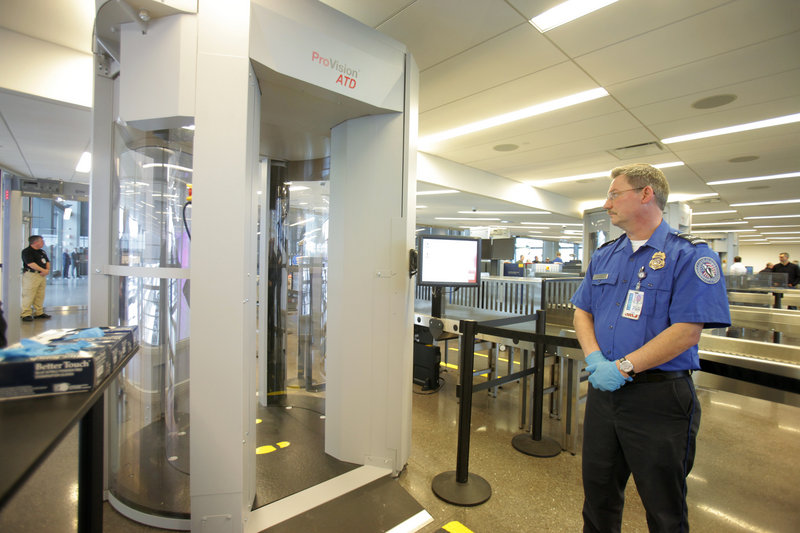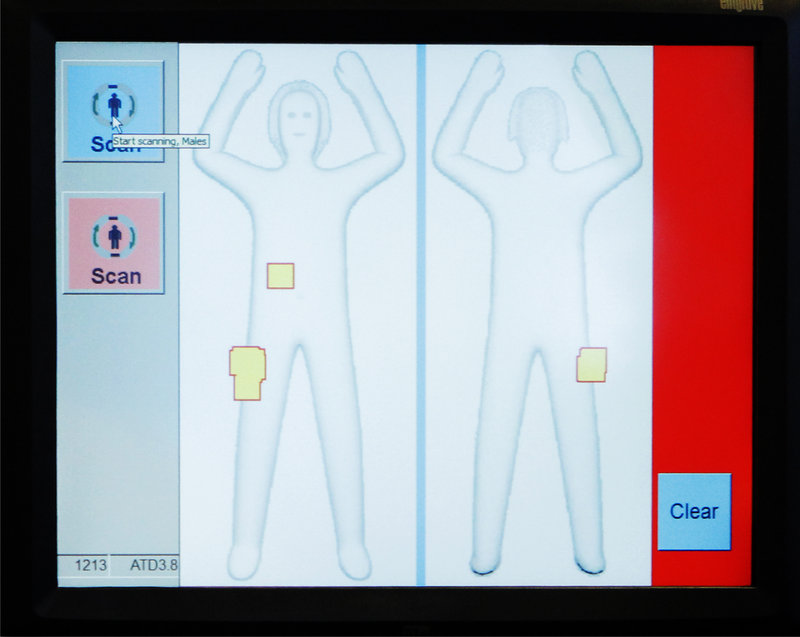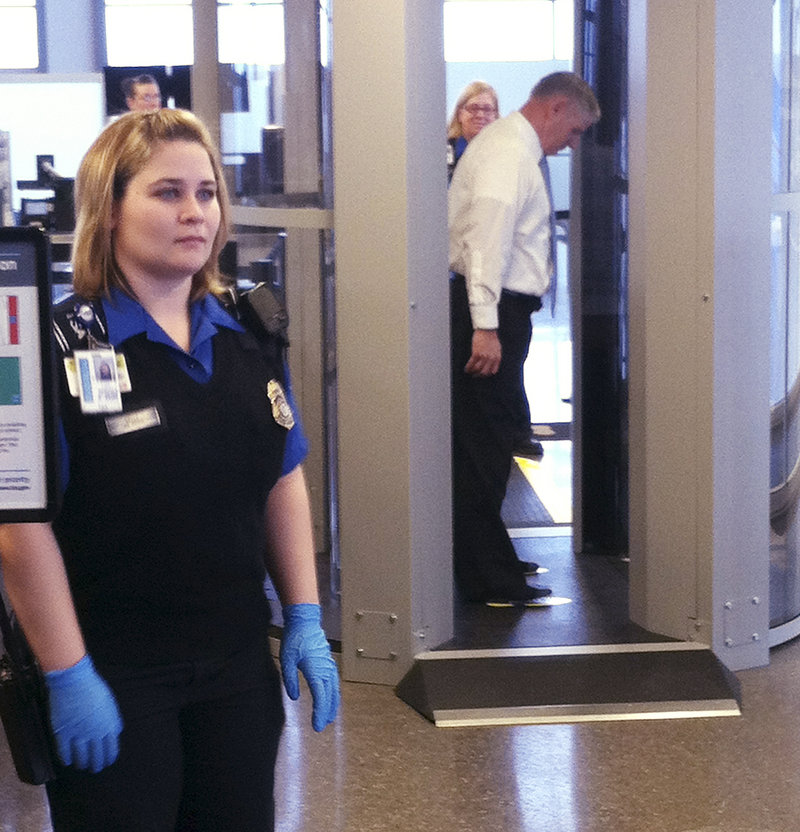PORTLAND — The devices look like tall tubes. Airline passengers step into them, raise their arms and get scanned with electromagnetic waves. Each scan takes a couple of seconds, and produces an image on a screen.
If nothing sets off the scanner, the screen flashes a green “OK.” If something does, the screen shows an outline of a human form, with locations of possible threats marked by yellow spots.
Three new state-of-the-art passenger scanning devices at the Portland International Jetport enable the Transportation Security Administration to detect metal, and non-metal threats such as plastic explosives.
The devices were installed last week, and TSA workers assigned to Portland’s airport are finishing their on-the-job training this week. The agency demonstrated the new technology Monday, with TSA workers posing as passengers going through the screening process.
One worker, Gordon Field, walked through with his belt on and his cellphone in his pocket. The image – identical for every passenger – showed what TSA spokeswoman Ann Davis called “anomalies” with yellow discs over where Field’s cellphone and belt buckle were.
“This is really the world’s best technology to scan passengers quickly and safely for a metal or nonmetallic object,” Davis said.
When the device does alert the staff to something on a passenger, TSA workers can search just that area, without having to do a complete pat-down.
The equipment uses what Davis described as harmless electromagnetic waves that are capable of detecting a tissue in someone’s pocket. For that reason, passengers will have to empty their pockets or be subjected to a pat-down of the highlighted area.
Not everyone is convinced that the electromagnetic waves are harmless.
Matt Ware of Durham, who travels for business, said he avoids the new screeners — which have been in other airports for some time – in favor of more traditional screening.
“Why expose myself to the radiation?” he said as he caught a flight out of the jetport Monday.
Jamie Daly of Omaha, Neb., said she also avoids the scans.
“I’m a medical student, so I get a lot of extra radiation all the time,” she said. “For me, I just don’t want any extra.”
Daly said she plans to research the type of radiation that comes from the scanners to determine whether it’s something she should really be worried about, but she hasn’t had the time.
Davis said the devices use harmless electromagnetic radiation, more like television or radio waves than potentially harmful radiation like X-rays.
The devices cost about $150,000 each. Early versions showed an accurate image of the passenger’s body shape, which prompted concerns about privacy.
The new software displays only a human outline, an image that is deleted once the passenger passes the checkpoint, Davis said.
Kim Burnham of Windham said she used the new devices Monday as she returned from a snowmobiling trip to Montana and she has no concerns.
“Anything that makes us safer is better,” she said. “If they want to look at my stuff, I have no problem with it.”
Any passenger who prefers not to be screened by the new technology can still walk through a metal detector, and get a full pat-down if it goes off.
Davis said that in other airports – the “advanced imaging technology” is already in about 100 of the nation’s 450 airports – more than 98 percent of passengers choose the new system.
Paul Bradbury, the jetport’s director, said it’s good for the jetport to get the scanners.
“It’s an efficient technology,” he said. “Not only does it give alerts to metal and non-metal for a safer aviation environment, it’s quicker.”
But it won’t necessarily speed up security screening, because carry-on items still must go on a conveyor belt through an X-ray machine. And passengers still must remove their shoes when they’re being screened.
Staff Writer David Hench can be contacted at 791-6327 or at: dhench@pressherald.com
Send questions/comments to the editors.





Success. Please wait for the page to reload. If the page does not reload within 5 seconds, please refresh the page.
Enter your email and password to access comments.
Hi, to comment on stories you must . This profile is in addition to your subscription and website login.
Already have a commenting profile? .
Invalid username/password.
Please check your email to confirm and complete your registration.
Only subscribers are eligible to post comments. Please subscribe or login first for digital access. Here’s why.
Use the form below to reset your password. When you've submitted your account email, we will send an email with a reset code.